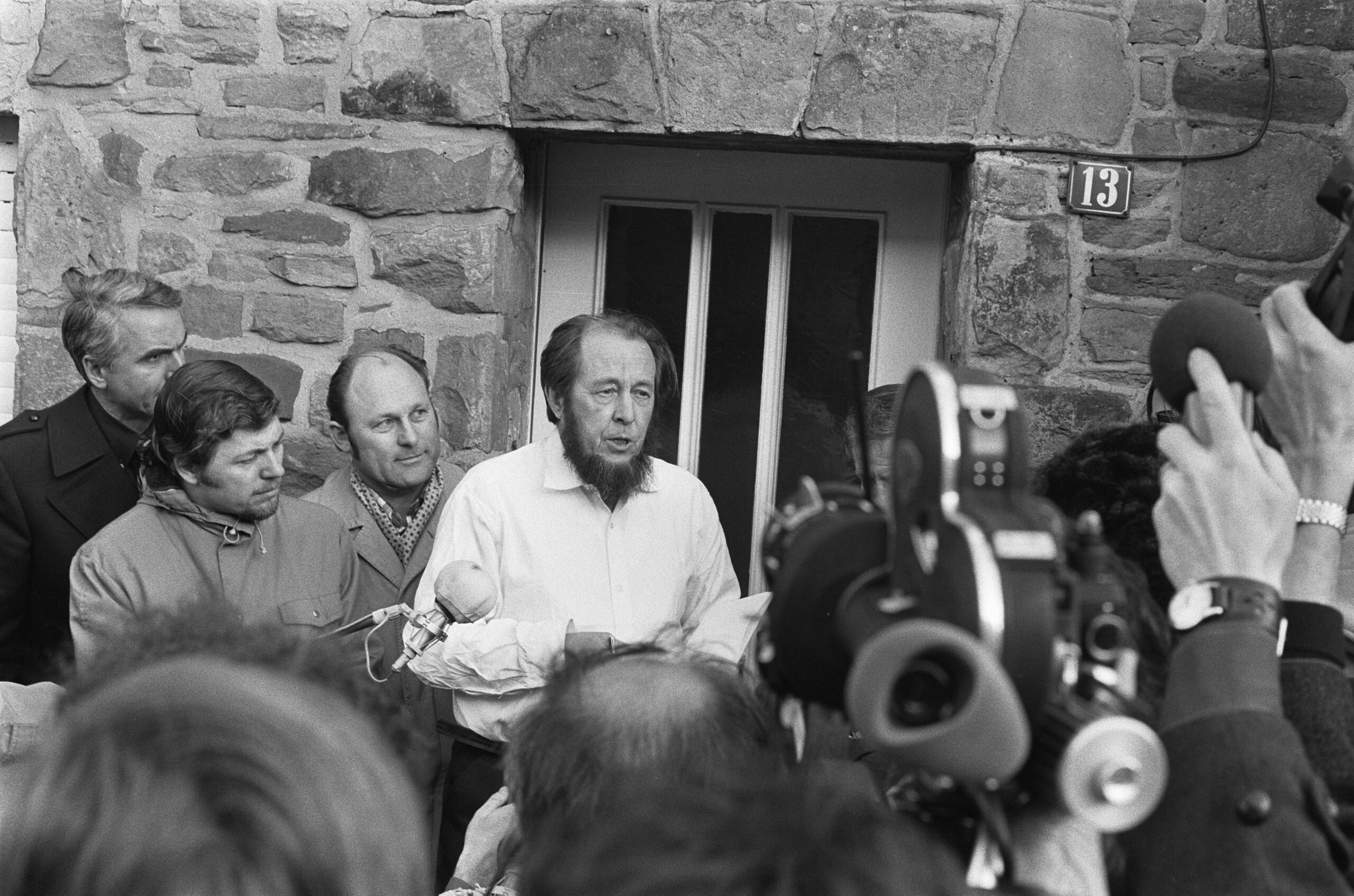Tekst: Simone Santini
In the Soviet Union silence broke on the 18th of November 1962. On that day, common citizens buying the muscovite literary review Novy Mir at any newsstand in the USSR could find printed on its pages One Day in the Life of Ivan Denisovich, a short novel by a then relatively unknown math teacher working in Ryazan: Aleksandr Solženicyn. Born in 1918, Solženicyn lived through the civil war and the ascent of Stalin’s absolute power. Like millions of his fellow countrymen, he served as a soldier in the Second World War. And like thousands, he was imprisoned for political reasons in the notorious Soviet internment camps, the gulags. His imprisonment was due to a series of letters allegedly mocking Stalin. The experience left him on the brink of death, but with much to write about. Freed from exile in 1956, Solženicyn was able to take a job as a secondary-school teacher but did not immediately go public with his testimony. For years, writing was almost a secret night activity to him. This changed in 1960, when Solženicyn approached the famous poet and Novy Mir-editor Aleksandr Tvardovsky and proposed the publication of One Day in the Life of Ivan Denisovich, a faithful recount of the life inside a gulag. Tvardovsky accepted and the short novel was published with the explicit blessing of the Soviet premier Nikita Khrushchev, who had denounced Stalin’s crimes and cult of personality during the XX CPSU Congress in 1956.
Immediately acclaimed by personalities such as the world-famous author Konstantin Simonov and philosopher György Lukács, Solženicyn’s novel rapidly became a best-seller both in the Soviet Union and abroad. Among the most passionate readers of One Day in the Life of Ivan Denisovich, there curiously was a group of Italian authors and intellectuals whose professional lives were profoundly influenced by Solženicyn’s first acclaimed masterpiece. It all started when journalist Raffaello Uboldi, the reporter based in Moscow for the Milanese newspaper Il Giorno, published a partial translation in Italian of the work by Solženicyn at the end of November 1962. At that moment, a veritable «translation rush» began. Recognizing the ground-breaking effect of Solženicyn’s novel, Giulio Einaudi, chief editor of the prestigious Turin Einaudi publishing house and son of Luigi Einaudi (one of the most famous anti-fascist leaders and President of the Italian Republic), wrote hastily to Uboldi asking for a complete translation of One Day in the Life of Ivan Denisovich, intended for publication as a book. Working under the pressure of an editor constantly reminding him of deadlines, Uboldi managed to complete the translation in December 1962 and Einaudi put out the Italian version of Solženicyn’s novel for sale in 1963. The thunder of the Turin publisher was partly stolen by the fact that another major Italian publishing house, the Garzanti, and an important magazine, L’Espresso, were able to bring forward their own translations of One Day in the Life of Ivan Denisovich early in 1963. From that moment on, Solženicyn’s works became classics for generations of Italian readers interested in contemporary Russian literature, au pair with the masterpieces by Mikhail Bulgakov and Vasilji Grossmann.
Among those who instantly held One Day in the Life of Ivan Denisovich as particularly dear to their heart was Italo Calvino, one of the most prominent European authors of the 20th century and a close collaborator of the Einaudi publishing house. An active member of the Italian Communist Party (PCI) during the Reconstruction years, Calvino became disillusioned with the PCI when the party under the leadership of Palmiro Togliatti showed complacency towards the Soviet invasion of Hungary in 1956. Consequently, he created alongside with his friends and colleagues the «cellula Giaime Pintor», a group of left-wing intellectuals protesting the USSR’s repressive actions in eastern Europe, and eventually broke away from the Communist Party. Italo Calvino was also a staunch advocate of the freedom of speech. «Freedom», he said in 1956 during a PCI meeting, «is the first and foremost condition for every creative activity, both in politics and in culture. To accomplish any thinking, we first must feel free».
The profound suffering of the victims of totalitarianism shown by Solženicyn in One Day in the Life of Ivan Denisovich left a deep impression on Calvino, who during WWII had battled against Nazi-Fascism as a Resistance fighter (his war experience served as a base for one of his most famous novels: The Path to the Nest of Spiders). Thus, in 1974 he praised his Russian colleague with these words: «I could even say that I am not interested in Solženicyn as an author […] Solženicyn counts for me as a man of my own generation, whose fundamental experiences start with the Second World War: for this reason, whatever he writes strikes me profoundly». The proof of that lies in another masterpiece by Calvino, The Day of a Scrutineer, a novel published in 1963 and revolving around the experience of Amerigo Ormea, a political scrutineer of communist beliefs tasked to supervise the legality of a voting procedure held in a hospice for handicapped people. Although Italo Calvino later distanced himself from Solženicyn’s religiosity, the choice of condensing in a single day the exemplary experience of a protagonist, the very titles, and the theme of common human suffering beyond politics and divisions intertwined One Day in the Life of Ivan Denisovich and Calvino’s novel, as they both are a product of the political and personal turmoil lived by the two authors in their times. Also, the incipit of the two novels is strikingly similar: they both start precisely at 5:30 a.m. As if Calvino wanted to tell us that, even if Amerigo Ormea and Ivan Denisovich as characters may seem light-years apart, they both share what essentially matters: that they pass through their days clinging on to their humanity.





